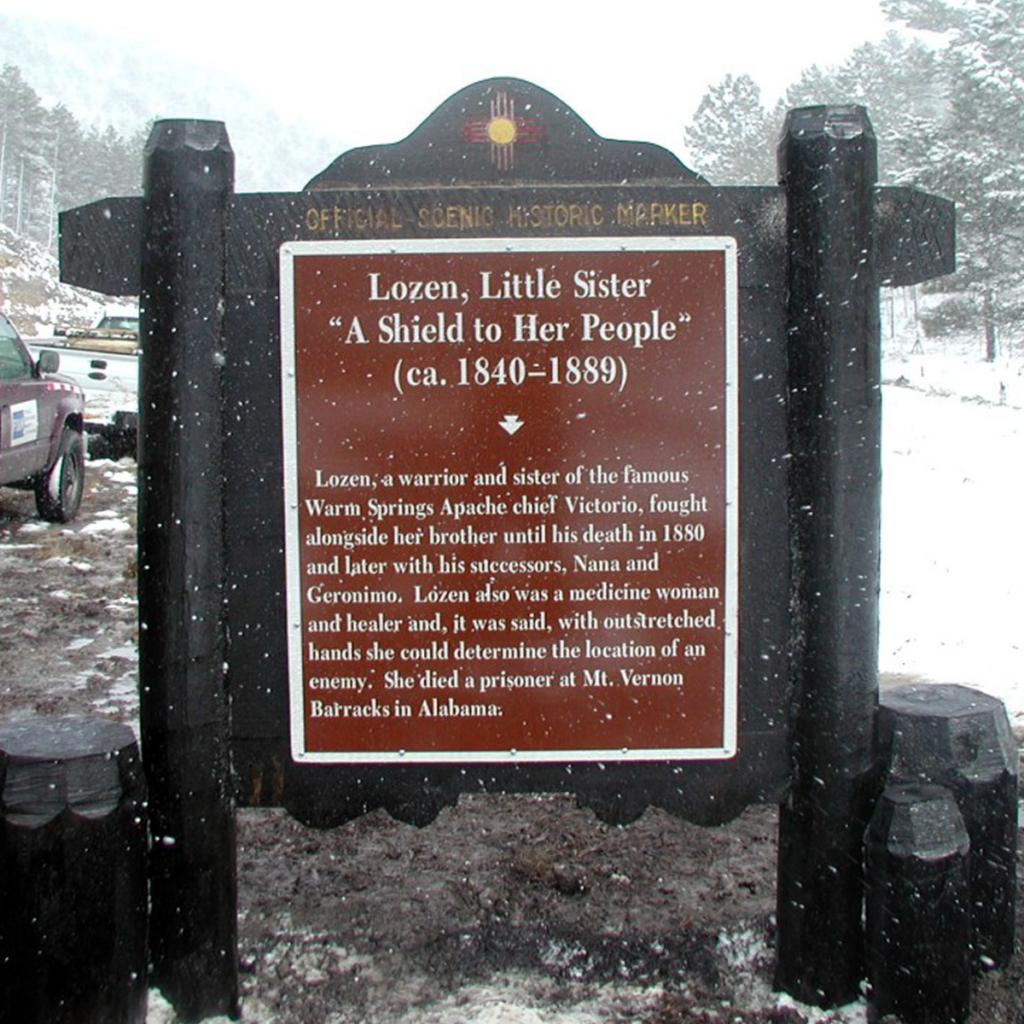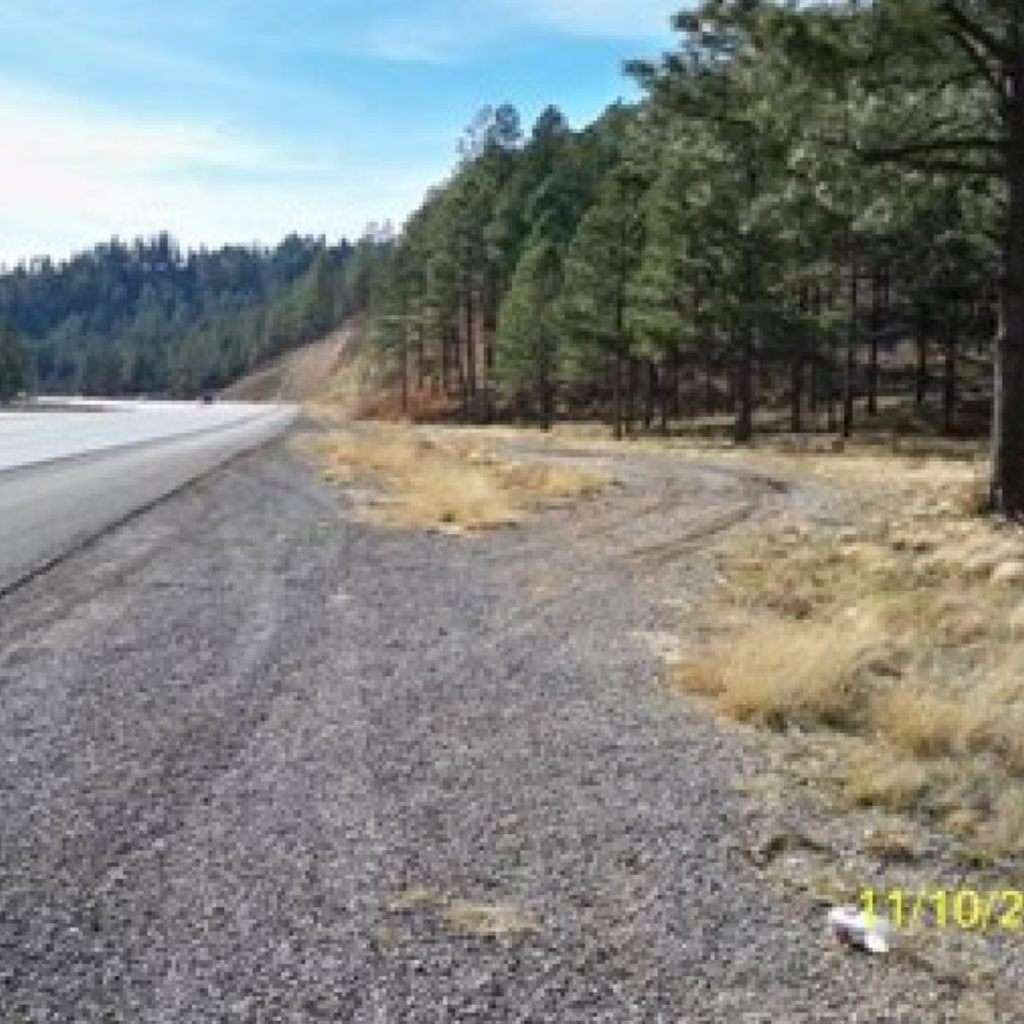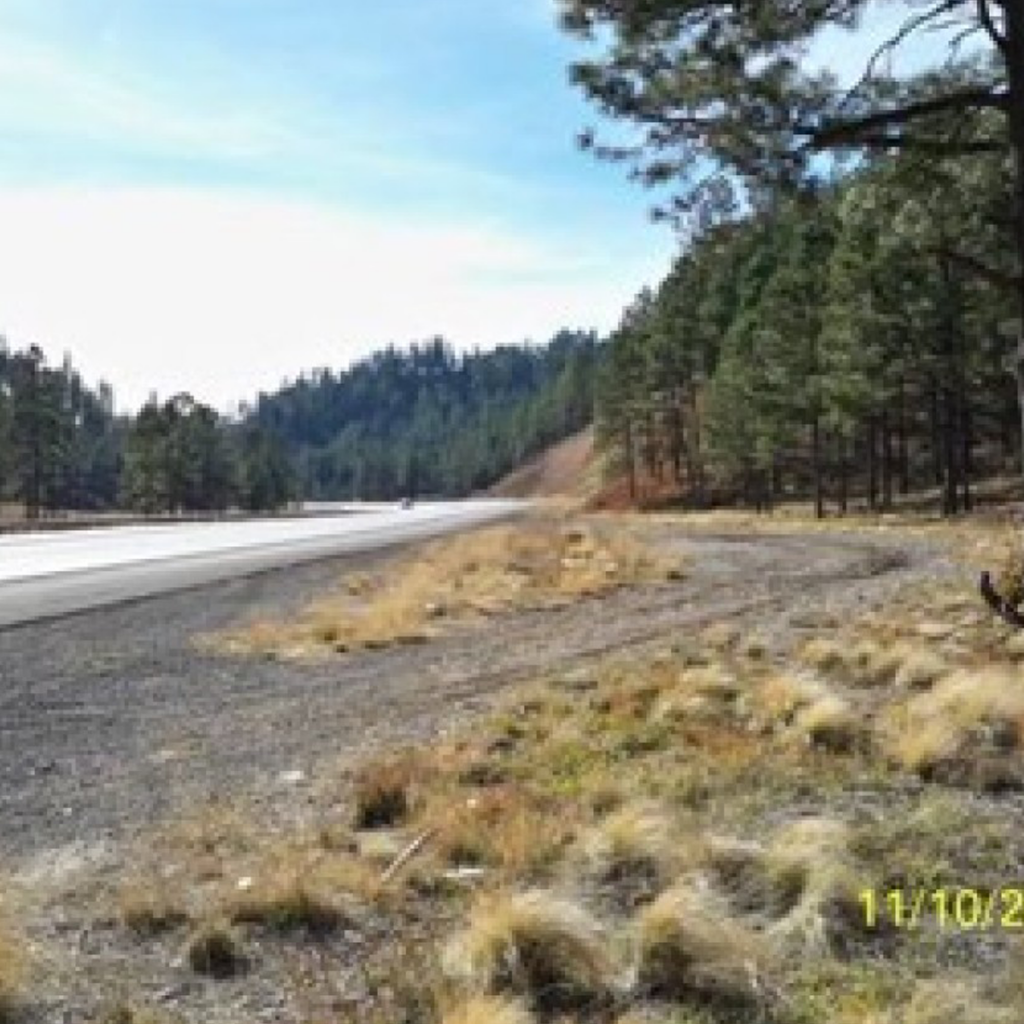Little Sister Lozen historic marker.
Photo Credit: Courtesy of New Mexico Historic Women Marker Program.
Little Sister Lozen
1840 - 1889
Otero County
A respected Apache warrior and medicine woman, she excelled in horseback riding, shooting, roping, and horse thievery, participating in raids and Apache resistance to placement on reservations. Her special powers are credited for successful evasion of pursuers.
Little Sister Lozen was a respected Apache warrior and medicine woman. She resisted Apache placement onto reservations alongside her brother, the Warm Springs Apache chief, Victorio, his successor Nana, and later Geronimo. With outstretched hands, it was said she was able to determine the location of an enemy. Apaches have credited Lozen’s special powers for Victorio’s successful evasion of pursuers.
Lozen was born in the 1840s, likely somewhere in southwestern New Mexico, to the Warm Springs or Ojo Caliente Apaches—the eastern branch of the Chiricahua, also known as the Mimbres Apaches. Lozen was about twenty-one years younger than Victorio and remained unmarried throughout her life. She acquired several names including, “Little Sister,” “Warrior Woman,” and “a Shield to her People,” a name bestowed by Victorio.
Lozen has stirred up controversy among scholars, with some regarding her as merely myth. Eve Ball, noted historian of Apache history, first uncovered stories of Lozen while working on her 1970 publication In the Days of Victorio. Ball attributed Lozen’s previous anonymity to Apache discomfort at revealing that an unmarried woman had joined men on raids. According to her sources, Lozen excelled in horseback riding, shooting, roping, and horse thievery, and Victorio considered her on par with other male warriors and did not go on a raid without her.
In the early 1870s, the U.S. government moved the Warm Springs Apaches to a reservation in Tularosa, New Mexico, and in 1877 to San Carlos, Arizona, despite their protests to remain at Ojo Caliente. Under Victorio’s leadership, the Warm Springs Apaches resisted. From 1878 to 1880, in what has become known as Victorio’s War, the U.S. army feverishly pursued the elusive band. In 1880, fearing an attack from the Mexican cavalry, Victorio led his band to Tres Castillos, Chihuahua, where they were ambushed. Victorio was killed, while other members of the band were either killed or taken prisoner. Nana—who would become head after Victorio’s death—and several others managed to flee.
Lozen narrowly escaped the ambush, instead staying behind to aid a woman in labor and escort her and her newborn child to the Mescalero Apache Reservation. Some Apaches believed that if Lozen had been at Tres Castillos, her people would have survived that day. She rejoined Nana and other survivors at an encampment where they gathered with other Apache bands, including those led by Geronimo and Juh. Lozen eventually joined Geronimo’s group.
Scholars Angie Debo and Ball disagree on whether Lozen was with Geronimo during his final surrender in September 1886. Debo believes that Lozen was not there while Ball thinks otherwise. According to Ball, Lozen traveled by train with Geronimo and others to Ft. Marion, Florida. The Apache prisoners were later transferred to Mount Vernon Barracks in Alabama. Lozen likely succumbed to tuberculosis and was buried in an unmarked grave at Mount Vernon.
Sources:
Ball, Eve, with Nora Henn and Lynda Sanchez. Indeh: An Apache Odyssey. Provo, Utah: Brigham Young University Press, 1980.
Ball, Eve, with James Kaywayla. In the Days of Victorio: Recollections of a Warm Springs Apache. Tucson: University of Arizona Press, 1970.
Ball, Eve, with Lynda Sanchez. “Legendary Apache Women.” Frontier Times, vol. 54, October/November 1980, pp. 8–12.
Boyer, Ruth McDonald, and Narcissus Duffy Gayton. Apache Mothers and Daughters: Four Generations of Family. Norman: University of Oklahoma Press, 1992.
Buchanan, Kimberly Moore. “Apache Women Warriors.” Southwestern Studies Series, no. 79. El Paso: Texas Western Press, 1986.
Cole, D.C. The Chiricahua Apache, 1846–1876: From War to Reservation. Albuquerque: University of New Mexico Press, 1988.
Etulain, Richard W. and Glenda Riley eds. “Chiefs and Generals: Nine Men Who Shaped the American West.) Notable Westerners Series, Golden, CO: Fulcrum Publishing, 2004.
Robinson, Sherry. “Apache Voices: Their Stories of Survival as Told to Eve Ball.” American Indian Biography Series. University of New Mexico Press, 2000.
Stockel, H. Henrietta. “Lozen: Apache Warrior Queen.” Real West 25, December 1982, pp. 20–22.
Stockel, Henrietta H. Shame and Endurance: The Untold Story of the Chiricahua Apache Prisoners of War. Tucson: University of Arizona Press, 2004.
Stockel, H. Henrietta. Survival of the Spirit: Chiricahua Apaches in Captivity. Reno: University of Nevada Press, 1991, p.p. 20–22.
Directions:
Little Sister Lozen
Otero County
Healer | Public servant | Spiritual leader |
Mexican Period (1821 - 1848) | Territorial Period (1848 - 1912) |
Southeast









